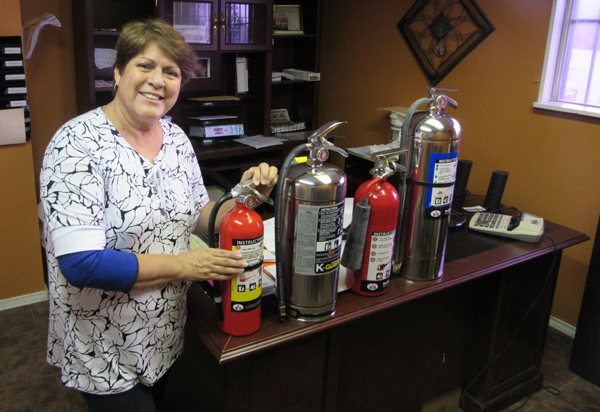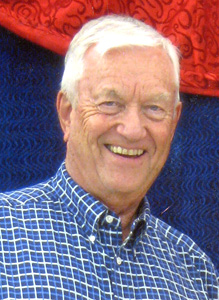- La Feria Community Holds Succesful Business Mixer Event
- Little Nashville to Take Place in Downtown Mercedes
- Lions Basketball Captures District Gold
- La Feria ISD Students Compete in Regional Chess Tournament
- Lions End First Half of 32-4A on a High Note
- La Feria ISD Held Another Successful Parent Conference
- Strong Appearance for Lions at Hidalgo Power Meet
- LFECHS Students Get to Meet Local Actress
- Students Participate in Marine Biology Camp
- Two LFECHS Students Qualify for All-State Band
FIRE – Your Best Friend or Worst Enemy
- Updated: September 1, 2017
Preparing for the Unthinkable

Rosie Guerra, ALL STATE Fire Extinguishers Valleywide manager, displays types of fire Extinguishers: (l-r) ABC multipurpose, type K, type CO2 , type A. Photos: Bill Keltner/LFN
Throughout the history of mankind, fire has been a comforting friend or a formidable foe.
From the welcome flames of our backyard Bar B Que on the fourth of July to the uncontrollable conflagrations ravaging huge forests and woods–these realities of the nature of fire, dictate why we must be prepared for the unthinkable in our homes and businesses.
To learn what we can do to prepare ourselves and protect our homes and families, LA FERIA NEWS met with Rosie Guerra, manager of ALL STATE Fire Extinguishers serving South Texas from Harlingen. Guerra has vast knowledge about fire prevention with 13 years in the business, and running a company owned by Joel and Veronica Baraja with branches ranging from the South Padre Island to Zapata and Crystal City, Laredo and Eagle Pass.
Guerra began by stating that fire departments in the United States responded to 1,451,500 fire calls in 2008, and the number keeps rising. The cost of the damage by fires in homes and businesses comes to an annual average of $l Billion dollars in property damage and countless deaths.
“Sad to say,” she continued, “most American homes and automobiles are not properly equipped or trained to extinguish a fire. And even if they have extinguishers available, many lack sufficient knowledge to know how to use them on which kinds of fire–not knowing these facts can worsen or spread a fire if not used properly.”
She added: “There are four basic classifications of fire, each one requiring a different type of extinguisher–the classifications are A, B, C and K.”
If your extinguisher bears these symbols it can be used on the following fire types:
(A) Ordinary Combustibles: Can be used on paper, cloth, wood, upholstery and other ordinary combustibles
(B) Flammable liquids: Can be used on gasoline, oil, grease and other flammable liquids. Never use water on oil or electrical fires!
(C ) Electrical Equipment: Can be used on live electrical equipment.
(K) Combustible Cooking Media: For use on cooking appliances that use combustible cooking oils (vegetable or animal oils and fats in home or restaurant kitchens.)
Guerra said, “if you ever find yourself in some type of fire emergency, here are the things to do and NOT to do: In case of fire, call the fire department first, then the following:
Get everyone out, plan YOUR retreat, then discharge your fire extinguisher. The contents are under pressure, therefore, do not discharge at a person’s face. Stand at a minimum of 6 to 10 feet from the fire. Hold the extinguisher firmly in an upright position, and stay low to avoid inhalation of smoke. Discharge just under the flames, using a side to side motion, sweeping the entire width of the fire.
The total discharge of extinguisher contents is a matter of seconds, therefore, any delay should be avoided, and finally, make sure that those having access to the fire extinguisher are informed of its operation.
Anyone wanting more information about fire prevention and fire suppression can call Rosie Guerra at 956 412-7840 or email allstatefireex1@yahoo.com.




